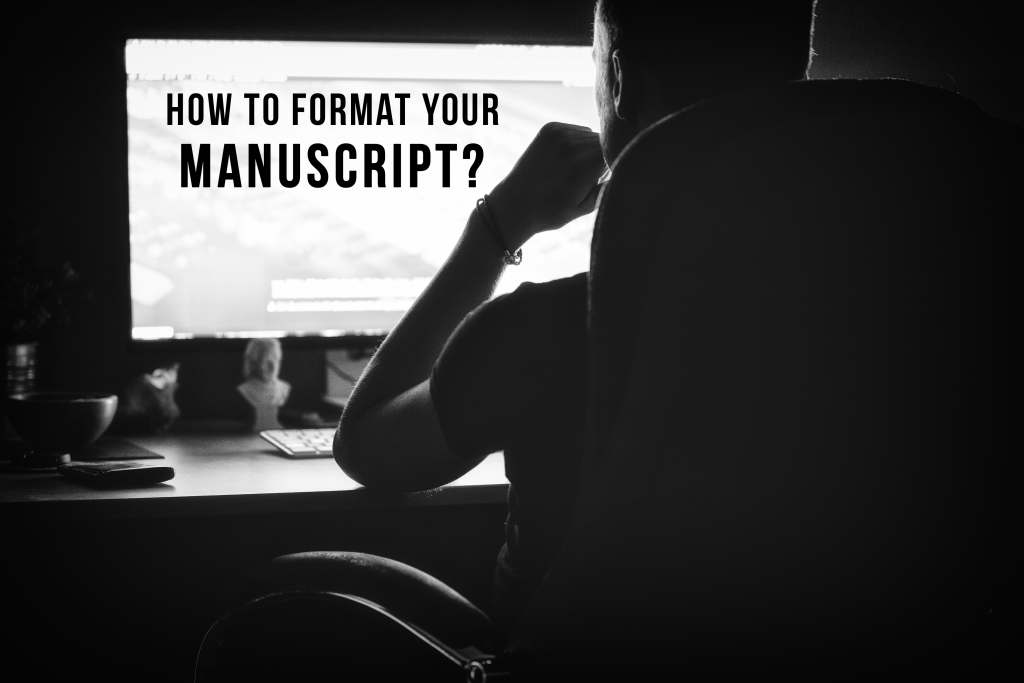How to Format your Manuscript

Recently, I happened to be part of an unofficial meet comprising of editors and typesetters. We meet frequently to discuss the hurdles editors, typesetters, and any personnel from the operations face and try to come out with solutions from all perspectives. This time, when we met, there were a lot of issues discussed but one thing that was common and got my attention was the issue of poor formatting of manuscripts sent by authors. Regardless of whether it s traditional or self-publishing, this is one of the major issues that annoy people at publishing houses. When manuscripts are opened, the ones that have proper formatting are the one to catch the eyes and help create that first impression. When an agent or an editor, or a typesetter, receives a manuscript that includes red and blue squiggly lines, improper and unnecessary capitalizations, and poor margins, one is bound to get annoyed by the look of it.
Imagine – when you receive a word document from someone in your office and the moment you open it, you see a lot of red and green lines and switching cases and the likes, you are more likely to get irritated and close the document than reading it. This is what will happen to your manuscript when its not clean. No matter how powerful your content is, the reader will get distracted by the errors that show up below each and every sentence and end up closing the document. If its traditional publishing where you’ve sent your manuscript to, chances are high that your manuscript might get rejected in minutes. Nobody has the time to sit and clean a document and read through the content. If it doesn’t look good, it won’t read well either. Your expertise as a writer will be suspected and your credibility will be questioned here. So, to avoid any damage to your persona as a writer, you should make sure your manuscript is clean and by clean, we mean not only from grammatical aspects but from formatting perspectives, too. Here, we have compiled some basic formatting errors that a majority of writers tend to overlook. Check them out and make changes in your manuscript accordingly.
Squiggly Lines
Now, the word processor that you use to type your manuscript is smart. It knows when you make mistakes and the instance you do, it throws a squiggly line. If you’ve noticed, there are three types of squiggly lines that a word processor throws out red, green, and blue. The red one signifies errors relating to spellings, the green one signifies grammar errors, spacing issues, and case concerns, and the blue ones stand for one-word two-word errors. When you make grammar errors on subject-verb agreement or pronoun-antecedent errors, the green squiggly lines are the first one to pop up. Similarly, when there is a spacing issue, it will pop up as well. The blue lines appear when you type in super market instead of supermarket (as a noun, of course). When you understand what each line represents, it becomes easier for you to make the right corrections and eliminate the lines. While your document may appear colorful with those lines, but trust me they are serious turn-offs for anyone who is viewing or reading your manuscript. So, the moment you finish a chapter or when you’re done writing for the day, go back to where you started and check for these lines and correct them. As writers, we write on auto-pilot with our thoughts driving our fingers and it is justifiable to make mistakes. But the wise thing to do is to proofread and eliminate these errors and make your manuscript look clean.
Font
One of the next major concerns that really annoy editors or agents is the font writers use to type in their manuscript. There are a lot of writers who live under the misconception that their book will come out with the same font they used when submitting their manuscript. That’s silly because when a manuscript goes for typesetting, appropriate fonts are used depending on the genre of a book and its target audience. So, until then, what you can do is stick to a neat font that will make it easy for editors or agents to sit and read through your content. Times New Roman is an appropriate font writers can use when sending out their work. Also, set the font size to 12 so it looks cohesive and consistent aesthetically. When you do this, you set the mood for the reader to sit and go through what you’ve written.
Capitalization
Unnecessary capitalization of words and no capitalization where it’s required immensely annoy an editor or an agent. According to standards, the first letter of the first word after a period should be capitalized. Other than that, proper nouns should start with a capitalized letter. Another case where the first letter of a word is capitalized is after opening quotation marks. Besides these, no word should start with a capitalized letter. When you type, do not assume that words with all the letters capitalized signify anger or tension. A lot of times, we have seen manuscripts with capitalized words, signifying a character yelling or emphasizing something. UNNECESSARY CAPITALIZATION IS IRRITATING is a powerful message. You don’t have to capitalize the entire phrase to convey this like we’ve done here. It makes no difference as the essence of the phrase remains the same. Emotions should be expressed through words and not formatting options. Besides this, you don’t have to bold, underline, or italicize text unnecessarily.
Lingos
Thanks to the intrusion of social media and messenger services like WhatsApp, Facebook, Twitter, and the likes, we are now more used to chat lingos. Personally, I’ve seen a lot of manuscripts that have U instead of you, ur instead of you’re or your, spcl in the place of special, and more. We cannot blame anyone because chatting is what we do most of our time and when we sit down to write, we tend to involuntarily make use of this lingo. But once you’re done typing, look for lingos like these and correct them with the proper ones because as you can see, these words give rise to squiggly lines and we don’t want them in our manuscript.
Conversations
One of the other instances of poor formatting happens when a writer pens down a conversation. There are a lot of writers who use this technique we used in our schools where each conversation starts in a new line and is very raw and devoid of description. Such conversations have these unnecessary three dots at the end to mark continuity or hesitation. They also have a lot of incomplete sentences that further give rise to grammar errors. So, when you write conversations, make sure they have a flow and are penned naturally and organically. You don’t have to start each conversation with the name of the person. Use pronouns to shorten sentences and make sure to use the right antecedents.
Other Important Formatting Dos and Don’ts
- Use the default font color for your manuscript black.
- Never indent using keyboard options like tab and spacebar. For your convenience, word processors come with formatting options that allow you to set margin and indents. 1.5 inch is the appropriate margin preference you can set for your manuscript.
- Double spacing is recommended.
- When you finish one chapter, start the next in a new page.
- When you start a new paragraph, ensure the first line of the paragraph is indented by half inch.
- When you are finally done writing the last line of your manuscript, type the word end and center it.
- Justifying your content causes uneven spaces to appear between words. This hinders the readability of your content, thereby affecting the experience. Do not use it unless and until it is completely necessary.
In an attempt to make your manuscript appear unique or driven by this spirit to appeal editors or agents and captivate them, do not use default template options word processors offer you. They only make reading experience bad.
When you format your manuscript right, you help an editor or an agent make it easy for him or her to read your work. Formatting paves way for one to have patience and increases comprehensibility. So, when you prepare your manuscript for publication, make sure you follow these best practices and make it look neat. Also, do remember that formatting your manuscript alone will not make it error-free. It will only make it look neat. Your manuscript has to go through a round of editing to remove any loopholes, plot issues, complex grammar errors, to increase cohesion, and more. So, to make things easy, format your manuscript even before you send your manuscript to an editor. Good luck!




